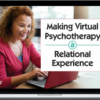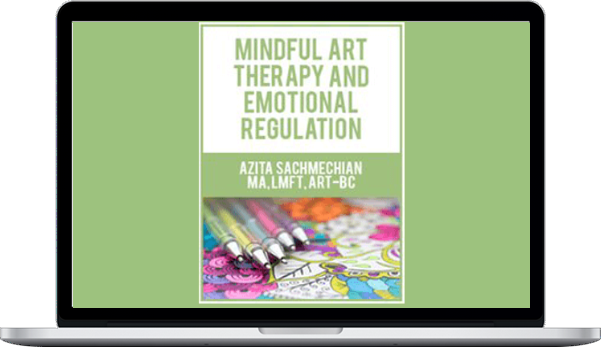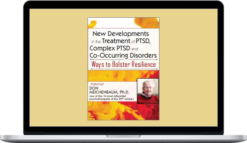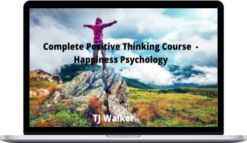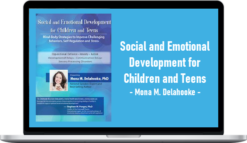Azita Sachmechian – Mindful Art Therapy And Emotional Regulation
$219.00 $33.00
»Delivery: Within 24hs
Description
Azita Sachmechian – Mindful Art Therapy And Emotional Regulation
Description Of Mindful Art Therapy And Emotional Regulation
Increase treatment success and help you deal with difficult clients
The capacity to maintain a calm state of mind even at the time of crisis creates a strong cornerstone for successful psychotherapy. When faced with crisis, the dysregulated individual who is often suffering from psychological disorder becomes dysfunctional and comes to treatment.
Due to the nature of crisis, clinicians end up regulating their overstressed client’s session after session without being able to dig into the pathology. Due to the high popularity of evidence-based programs, many clinicians are mandated to follow certain time-bound protocols to address the diagnosis. Treating acutely stressed individuals in the context of managed care policies becomes extremely challenging and a source of major stress for the clinician. These pressures, in addition to often being the target of emotional outbursts from their dysregulated clients who project their pain and transference onto them, make the clinician the prime target of emotion dysregulation, as well.
In this course, you will discover new techniques to help your clients regulate efficiently as well as how to teach these techniques to your clients to increase treatment success. Through art therapy and mindfulness, clients will finally be able to move past the crisis and deal with the real issues at hand. You will explore Mindful-Art therapy techniques to help you remain emotionally regulated while dealing with very difficult clients.
Target Audience
- Marriage and Family Therapists
- Counselors
- Social Workers
- Art Therapists
- Psychologists
- Psychiatric Nurse Practitioners
- Guidance Counselors
- Alcoholism and Drug Abuse Counselors
- Occupational Therapists
- Recreational Therapists
- Pediatricians
- Physicians
- Mental Health Nurses
- School Guidance Counselors
- Educators
Objectives
- Discuss the most recent studies on the issue of emotion regulation and brain circuitry
- Discover the most current treatment approaches including art therapy and mindfulness approaches for emotion regulation offered for different populations
- Apply techniques in the context of evidence-based programs and managed care timeframe
- Explore innovative techniques combining mindfulness and art therapy techniques (Mindful-Art therapy) for optimal emotion regulation
- Identify common mistakes in applying art and mindfulness techniques; how to avoid dysregulating and traumatizing your clients
- Demonstrate how to regulate yourself using Mindful-Art therapy technique in the presence of a very difficult client
Outline
CURRENT RESEARCH
- Introduction to emotion regulation and dysregulation
- Brain circuitry and emotion regulation
- Effect of art therapy and emotion regulation
- Mindfulness and emotion regulation
- Emotion dysregulation in borderline personality disorder
- Emotion dysregulation in PTSD
- Emotion dysregulation in general public
CURRENT TREATMENT AND APPROACHES AVAILABLE FOR ADDRESSING EMOTION DYSREGULATION
- DBT
- Trauma-Focused CBT
- Sensory Motor Psychotherapy
- Accelerated Experiential/Dynamic Psychotherapy
ART THERAPY AND EMOTION REGUALTION: CURRENT APPROACHES
- Emotion regulation through use of clay
- Emotion regulation through use of paper
- Multimedia approach
WORD OF CAUTION: ART MATERIAL TO BE CAREFUL ABOUT
- Paint and dysregulation
- Size of the paper and dysregulation
CASE STUDY OF ART BECOMING DYSREGULATING
INNOVATIVE EMOTION REGULATION TECHNIQUES IN EVIDENCE-BASED PROGRAMS AND MANAGED CARE
- Visual Distancing
- Visual Perceptual Shift
- Grounding
- Perceptual body awareness
HAND-ON EXPERIENCE
- Image making of the bodily sensation
CASE STUDIES AND APPLIED MINDFUL-ART THERAPY TECHNIQUES
PRACTICAL APPLICATION OF THE TECHNIQUES IN THE CONTEXT OF EVIDENCE-BASED PROGRAMS.
- Evidence-based programs general structure
- Techniques through assessment phase
- Techniques through treatment phase
MINDFULNESS-BASED EMOTION REGULATION TECHNIQUE FOR CLINICIANS
- Amplified Groundedness (shifting gear technique)
ART ACTIVITIES AND PARTICIPATIONS; HANDS-ON EXPERIENCE:
- Visualizing a very difficult client
- Practicing perceptual awareness and groundedness
- Build your own ways of “Shifting Gear”
CASE STUDY OF MINDFULNESS BECOMING A SOURCE OF DYSREGULATION
About Azita Sachmechian
Azita Sachmechian, MA, LMFT, ART-BC, is a Licensed Marriage and Family Therapist and Board Certified Art Therapist. She has nearly a decade of experience working with children and their families at Cedars Sinai Hospital in Los Angeles, California. Ms. Sachmechian earned her Masters of Arts–Marriage and Family Therapy from Phillips Graduate Institute, Encino, California. She has taught art therapy to master level students in Pacific Oaks College as well as psychiatry interns at Cedars Sinai Hospital.
Ms. Sachmechian is certified in evidence-based programs such as Triple P Parenting and Trauma-Focused Cognitive-Behavioral Therapy. She is currently running a research study at Cedars Sinai Hospital, studying the effect of Mindful-Art therapy techniques on parents of premature babies at the Neonatal Intensive Care Unit. Ms. Sachmechian maintains a private practice in Los Angeles and is a member of the California Association of Marital and Family Therapist (CAMFT), the Southern California American Art Therapy Association (SOCALATA), and the American Art Therapy Association (AATA).
Speaker Disclosures:
Financial: Azita Sachmechian maintains a private practice. She receives a speaking honorarium from PESI, Inc.
Non-financial: Azita Sachmechian is a member of the California Association of Marital and Family Therapist (CAMFT); the Southern California American Art Therapy Association (SOCALATA); and The American Art Therapy Association (AATA).
More courses from the same author: Azita Sachmechian
Delivery Policy
When will I receive my course?
You will receive a link to download your course immediately or within 1 to 21 days. It depends on the product you buy, so please read the short description of the product carefully before making a purchase.
How is my course delivered?
We share courses through Google Drive, so once your order is complete, you'll receive an invitation to view the course in your email.
To avoid any delay in delivery, please provide a Google mail and enter your email address correctly in the Checkout Page.
In case you submit a wrong email address, please contact us to resend the course to the correct email.
How do I check status of my order?
Please log in to HealingCourse account then go to Order Page. You will find all your orders includes number, date, status and total price.
If the status is Processing: Your course is being uploaded. Please be patient and wait for us to complete your order. If your order has multiple courses and one of them has not been updated with the download link, the status of the order is also Processing.
If the status is Completed: Your course is ready for immediate download. Click "VIEW" to view details and download the course.
Where can I find my course?
Once your order is complete, a link to download the course will automatically be sent to your email.
You can also get the download link by logging into your HealingCourse account then going to Downloads Page.
Related products
Total sold: 1

